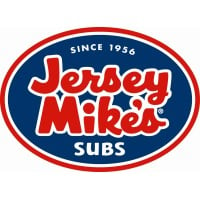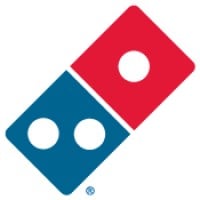Company Cyber Security Posture
NANA
NA Company Details
NA
NA
NA
NA
NA
NA
Scan still pending
NA
NA
Between 200 and 800
This score is AI-generated and less favored by cyber insurers, who prefer the TPRM score.
 NA Global Score
NA Global Score.png)

Company Scoring based on AI Models
| Model Name | Date | Description | Current Score Difference | Score |
|---|---|---|---|---|
| AVERAGE-Industry | 03-12-2025 | This score represents the average cybersecurity rating of companies already scanned within the same industry. It provides a benchmark to compare an individual company's security posture against its industry peers. | N/A | Between 200 and 800 |
Company Cyber Security News & History
| Entity | Type | Severity | Impact | Seen | Url ID | Details | View |
|---|
Company Subsidiaries

NA
Access Data Using Our API

Get company history
.png)
NA Cyber Security News
Jollibee Launches Its Franchising Program in the U.S.
The global restaurant brand is seeking high-caliber, multi-unit franchisees who not only see an outstanding business opportunity but who ...
Jollibee Group Reports Strong Q1 2025, Fueled by Global Expansion with Strong PH and International Growth
Jollibee Group Q1 2025 Financial Highlights show strong sales and revenue growth, with systemwide sales up 18.9% and revenue up 14.6% year-on- ...
Philippines' Fast-Food Giant Jollibee Takes On Starbucks Globally
The listed operator's popular fast-food chain Jollibee already outpaces its American rivals McDonald's and KFC at home in Philippines, thanks to ...
Jollibee Cyberattack: Hacker Claims Access To Sensitive Data
Jollibee, the Philippines' largest fast-food chain, has allegedly been hit by a massive data breach. The Jollibee cyberattack came to light ...
Jollibee Grand Opening Marking Its First Location in the State of Pennsylvania
Global restaurant sensation, Jollibee is bringing its signature brand of joy to Philadelphia and officially establishing the brand's first ...
Jollibee Group to open new store in Chantilly, Virginia
Global restaurant brand Jollibee is set to open its first location in Chantilly, Virginia, US, on 21 November 2023. The new location is set to ...
Jollibee Foods accelerates digital transformation for growth
The strategic collaboration enables JFC to streamline digital transactions, elevate customer experiences and fuel business growth on a global scale.
Jollibee Investigates Alleged Data Breach Affecting Millions
Jollibee Foods Corp., the largest restaurant operator in the Philippines, is investigating an alleged data breach that may affect millions of ...
Jollibee's CEO Has Ambitious Post-Pandemic Growth Plans
Jollibee Foods Corporation, known for its fried chicken chain aims to be one of the world's top five restaurant groups.

NA Similar Companies

Jersey Mike's Subs
Jersey Mike’s, a fast-casual sub sandwich franchise with more than 3,000 locations open nationwide, believes that making a sub sandwich and making a difference can be one and the same. Jersey Mike’s offers A Sub Above®, serving authentic fresh sliced subs and authentic Philly cheesesteaks grilled t

Restaurantes TOKS
El primer restaurante se abrió en el año 1971, somos más de 8,000 colaboradores distribuidos en más de 100 unidades de negocio a nivel nacional y un corporativo conformado por las áreas de: Recursos Humanos Jurídico Contraloría Sistemas Operaciones Producción Mercadotecnia Responsabilida

Life Cafe Lifetime Fitness
Life Cafe Lifetime Fitness is a Restaurants company located in 9602 Main St, Fairfax, Virginia, United States. Show more Show less

Darden
Darden is a restaurant company featuring a portfolio of differentiated brands that include Olive Garden, LongHorn Steakhouse, Yard House, Ruth's Chris Steak House, Cheddar's Scratch Kitchen, The Capital Grille, Seasons 52, Eddie V's, and Bahama Breeze. Our people equal our success, and we are proud

Domino's
What’s behind one of the world’s top public restaurant brands? Fun and innovative franchise and corporate team members who are driven to win. Inspired to make each day better than the last, people may join for different reasons but what motivates them to stay are the passionate and talented colleagu

Covelli Enterprises
Covelli Enterprises operates nearly 300 Panera Bread bakery-cafes spanning eight states. Headquartered in Warren, Ohio, Covelli Enterprises is the single largest franchisee of Panera Bread, LLC and one of the largest restaurant franchisees in the country. As a leader in the fast casual segment, Cove

Frequently Asked Questions
Explore insights on cybersecurity incidents, risk posture, and Rankiteo's assessments.
NA CyberSecurity History Information
How many cyber incidents has NA faced?
Total Incidents: According to Rankiteo, NA has faced 0 incidents in the past.
What types of cybersecurity incidents have occurred at NA?
Incident Types: The types of cybersecurity incidents that have occurred include .
Additional Questions
What Do We Measure?
















Every week, Rankiteo analyzes billions of signals to give organizations a sharper, faster view of emerging risks. With deeper, more actionable intelligence at their fingertips, security teams can outpace threat actors, respond instantly to Zero-Day attacks, and dramatically shrink their risk exposure window.
These are some of the factors we use to calculate the overall score:
Identify exposed access points, detect misconfigured SSL certificates, and uncover vulnerabilities across the network infrastructure.
Gain visibility into the software components used within an organization to detect vulnerabilities, manage risk, and ensure supply chain security.
Monitor and manage all IT assets and their configurations to ensure accurate, real-time visibility across the company's technology environment.
Leverage real-time insights on active threats, malware campaigns, and emerging vulnerabilities to proactively defend against evolving cyberattacks.




